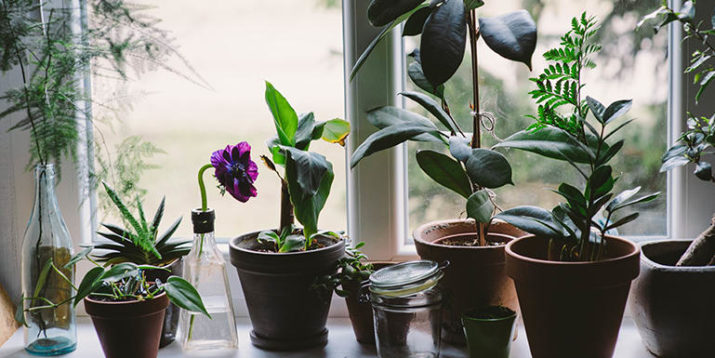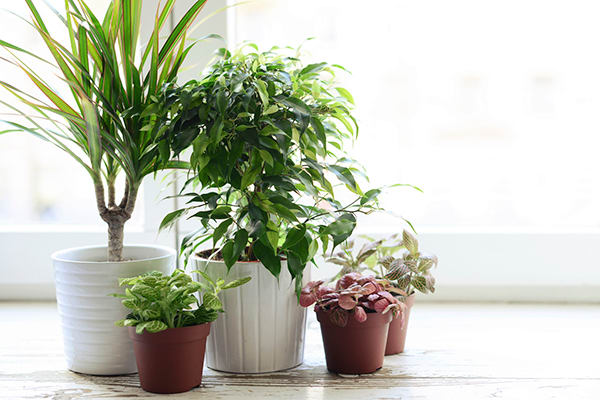Can Indoor Plants REALLY Clean the Air?

Check out any healthy lifestyle website and chances are you’ll come across an article that says sprucing your space up with some houseplants can clean the air inside of your home or apartment.
But can a fern or a ficus really purify your indoor air?
Sorry, probably not.
NASA scientists first started studying plants’ air-cleaning abilities back in the late ’80s while looking for natural ways to clean the air inside of closed environments like office buildings and space stations.
Their research, along with more recent studies, have found that many common houseplants can absorb ozone and some volatile organic compounds (VOCs) like formaldehyde, toluene, benzene, and carbon monoxide.
But that doesn’t mean that creating an indoor greenhouse will turn your home into an entirely pollution-free zone.
“It’s clear that a lot more research still needs to be done before we can say that it’s a useful tool,” says Janice Nolen, American Lung Association Assistant Vice President of National Policy. “We know that in places like labs or clinical settings, some studies show that plants reduce some VOCs at some times. But the studies haven’t shown that it translates to a normal home or office.”
How to Keep Your Indoor Air Fresh
You’re much better off keeping as many VOCs are possible out of your home in the first place, Nolen says.
For instance, choosing low- or no-VOC paints, allowing new furniture or carpet to offgas outdoors before bringing it inside, and not smoking indoors.
And if high levels of VOCs do get into your space? Open up those windows.
“The second most effective way is adding ventilation, so you have fresh air coming in and dirty air going out,” Nolen says.

The Benefits of Houseplants
That’s not to say that plants don’t come with other perks. Aside from dressing up your space, greenery simply makes you feel good.
“Having plants at home indoors and outdoors is uplifting,” says Michael Balick, Ph.D., ethnobotanist at the New York Botanical Garden. “It can even be stress-reducing — taking a person out of the realm of their daily routine for a few minutes, into a place of marvel about the complexity, beauty, and importance of nature.”
Indeed, findings suggest that people feel less tension and anxiety when exposed to plant-filled rooms compared to plant-less ones.
Other studies suggest plants can help you feel more energized, improve focus and concentration, and even contribute to having a more positive outlook on life.
Which ones should you bring home?
That depends on your aesthetic, your home’s lighting and humidity levels, and your ability (or lack thereof) to water your plant regularly.
These common plants are all good picks, says Michelle Polk, an herbalist and founder of the indoor gardening resource HousePlantGirl.com.
How to Pick the Indoor Plant That Fits Your Home:
Snake plant
Lighting needs: Snake plants can handle almost any lighting situation, from indirect sunlight to low-level lighting, Polk says.
Watering needs: Snake plants are pretty low maintenance. You only need to water them every week or so, when their soil starts to dry out.
Boston fern
Lighting needs: Boston ferns do best in indirect light.
Watering needs: They like moist soil, so regular watering is a must. They’re also kind of picky with regards to the amount of moisture in the air, and tend to do best in high-humidity environments.
Bamboo (reed) palm
Lighting needs: Bamboo palms can handle low light, but they’ll grow taller in brighter light.
Watering needs: This is a plant that doesn’t like to be overwatered. Give your bamboo palm a drink whenever the soil feels dry, and it’ll be happy.
Spider plant
Lighting needs: Spider plants do best in indirect sunlight, but they can also survive under artificial lighting.
Watering needs: Spider plants like moist (but not soaking wet) soil, so they need to be watered regularly, says Polk.
Aloe vera
Lighting needs: Like many houseplants, aloe vera thrives in indirect sunlight. But it can handle living in artificial light, too.
Watering needs: Aloe vera are cactus-like plants, so they don’t need much in the way of water. In fact, it’s best to let the soil dry out almost completely in between waterings.
Peace lily
Lighting needs: In terms of light, peace lilies are pretty chill. They actually prefer low or artificial light.
Watering needs: Peace lilies only need to be watered around once a week. Best of all, their flowers will start to droop when they get thirsty, so you know exactly when it’s time to give them a drink, according to Polk.
Areca palm
Lighting needs: Areca palms need bright, indirect sunlight — and they’re a little finicky. If they don’t get exactly what they want, their leaves will start to turn yellow.
Watering needs: As with their lighting needs, areca palms are particular. In order to thrive, their soil needs to remain moist in the spring and summer, and drier in the fall and winter.
So go ahead and pick a plant (or two or 10 — you really can’t have too many). With your new indoor greenery, you’ll have a more beautiful — and more calming — space.
